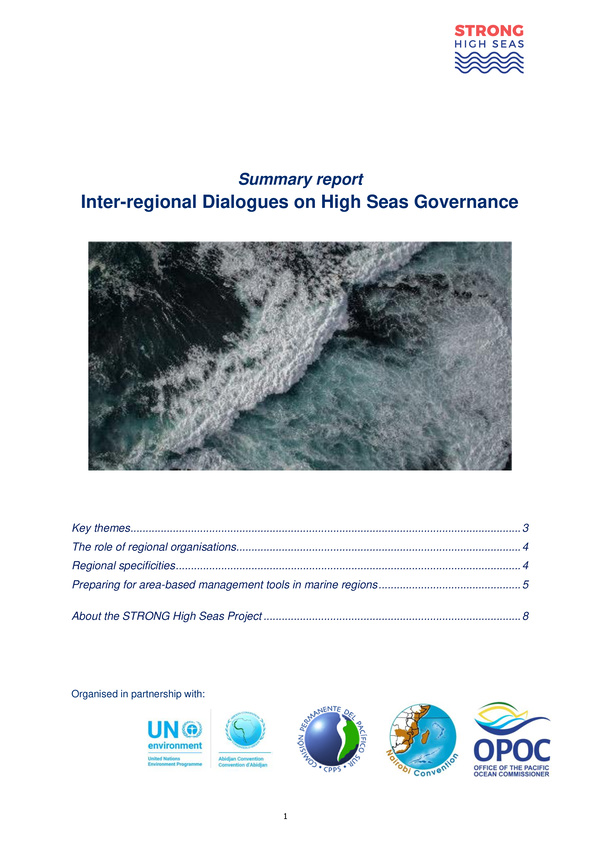Summary report: Inter-regional Dialogues on High Seas Governance
Member States at the United Nations (UN) are currently negotiating a new treaty for the conservation and sustainable use of high seas biodiversity in areas beyond national jurisdiction (ABNJ). While i...

Abstract
Member States at the United Nations (UN) are currently negotiating a new treaty for the conservation and sustainable use of high seas biodiversity in areas beyond national jurisdiction (ABNJ). While in-person negotiations at the intergovernmental conference (IGC) were interrupted by the global pandemic, intersessional discussions continued online and States continued to exchange views, reflect on their positions, and consider how an agreement might ultimately be concluded. Seeking to facilitate these exchanges, the STRONG High Seas project and regional partners convened four inter-regional expert meetings, connecting colleagues across continents to share experiences and discuss high seas governance issues. One set of workshops, organised in collaboration with the Permanent Commission for the South Pacific (CPPS) and the Office of the Pacific Ocean Commissioner (OPOC) connected stakeholders across the Pacific. The other set of workshops, organised with the Abidjan and Nairobi Conventions, connected stakeholders from both sides of the African content. The first meeting focussed on the activities of regional organisations and how they may play a role in high seas governance under a future treaty. The second session focussed on the process for designating management tools and protected areas, in particular how a new agreement could support cooperation and coordination. Following informal introductions in breakout groups, the meetings began with an expert presentation introducing the state of play, exploring key issues and posing discussion questions. The majority of the time was then dedicated to open and informal discussions. The meetings brought together a diverse group of over 70 experts and stakeholders, including representatives from: national governments, delegations to the negotiations and UN permanent missions; Regional Seas programmes; Regional Fisheries Management Organisations (RFMOs); Large Marine Ecosystem programmes (LMEs); regional economic bodies; intergovernmental organisations and sectoral bodies; funding bodies; scientific and research organisations; policy projects; and non-governmental organisations (NGOs). As the workshop was held under the Chatham House rule, this report does not quote or cite any specific speaker or organization, nor provide further detail on the organisations and representatives that participated. It is nonetheless hoped that by sharing some key themes from these discussions, as well as illuminating some points of both consensus and contention, this summary will provide food for thought as negotiators look toward IGC5.
Publication Details
Authors: Glen Wright
Venue: STRONG High Seas Year: 2022 Institution: STRONG High Seas
Links and Resources
Keywords
moderator, organiser, workshop